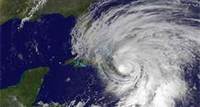Used-Vehicle Prices to Increase in Aftermath of Hurricane Sandy
 |
McLEAN, VA--Nov. 6, 2012: Used-vehicle prices are expected to increase in the near term after Hurricane Sandy destroyed thousands of vehicles.
The National Automobile Dealers Association is predicting that prices of used vehicles up to 8-years-old will increase from 0.5% to 1.5% as a result of Hurricane Sandy.
"The loss of used-vehicle supply and the increase in replacement demand after Hurricane Sandy will have the greatest impact on used-vehicle prices in December," said Jonathan Banks, executive automotive analyst with the NADA Used Car Guide.
While no two storms are alike, NADA points out that the flood damage caused by Hurricane Katrina, which cut a devastating swath across the Gulf region in late August 2005, offers insight into the impact that Hurricane Sandy could have on used-vehicle prices.
The reduction in the supply of used vehicles and increase in demand resulting from Hurricane Katrina led to used-vehicle prices increasing by as much as 3% or $309 over the four month period following the storm's landfall.
"Although Sandy's reach encompassed an area with a greater population density than Katrina, the number of vehicles damaged by flooding doesn't appear to be as high as the number lost to Katrina," Banks stated.
This is supported by initial damage estimates for Hurricane Sandy, which place insured losses for the storm between $10 and 20 billion, according to EQECAT, Inc., a catastrophe risk analytics company based in Oakland, Calif. The total loss is projected to be between $30 to 50 billion, according to EQECAT.
By comparison, the insured loss cost of Hurricane Katrina was $46.5 billion, and the total cost was $145 billion (both in 2011 dollars), according to AIR Worldwide and the National Oceanic and Atmospheric Administration.
"Current estimates for insured and total losses place Hurricane Sandy on average at about one-third of the cost of Hurricane Katrina," Banks added. "The destruction wrought by Hurricane Sandy was most severe in New York and New Jersey, and supply and demand disruptions will be especially severe in these states."
New York and New Jersey rank in the top 15 U.S. states in terms of overall vehicles in operation and new-vehicle dealerships. In addition, both states have large populations and high population-density ratios. Each state also has a larger population of cars than trucks and import brands comprise a significant share of overall vehicle sales.
"Regionally, the concentrated damage that occurred in New Jersey and New York mean that used-vehicle prices, particularly for import and luxury cars, will most likely increase beyond NADA's national level expectations," Banks said.
Banks added that prices for large pickup trucks should also increase towards the high end of NADA's predicted range as contractors and other service-related professionals will need to replace vehicles required to support their livelihoods and because supply for the segment is already constrained.
NADA Donates $1 Million to Jump-Start Fundraising for Emergency Relief Following Hurricane Sandy
NADA has pledged $1 million to jump-start a national fund-raising campaign for the Emergency Relief Fund of the National Automobile Dealers Charitable Foundation.
"This is the time for dealers across the country to step up and help those in the Northeast most affected by Hurricane Sandy," said Bill Underriner, NADA chairman and a dealer from Montana.
The fund provides financial assistance to dealership employees affected by natural disasters.
"It's wonderful that NADA is leading by example," said Bob Mallon, chairman of the NADA Foundation. "We want to be in a strong position to provide timely assistance to dealership employees as they work through the long process of recovery. We now need to reach out to dealers everywhere to join in the relief campaign."
Damages are still being assessed in the parts of New York and New Jersey hit hardest by the hurricane.
"Widespread power outages and downed phone lines are hampering communications between dealers and their employees," said David Hyatt, NADA vice president of public affairs. "It will be a long time before we know the extent of the damages but from what we're hearing the impact on dealerships and their employees is expected to be severe."
The NADA Foundation is working closely with Mark Schienberg, president of the Greater New York Automobile Dealers Association, and Jim Appleton, president of the New Jersey Coalition of Automotive Retailers.


